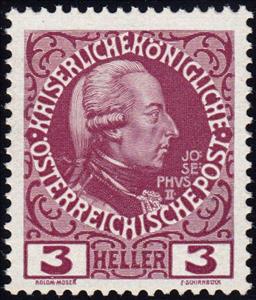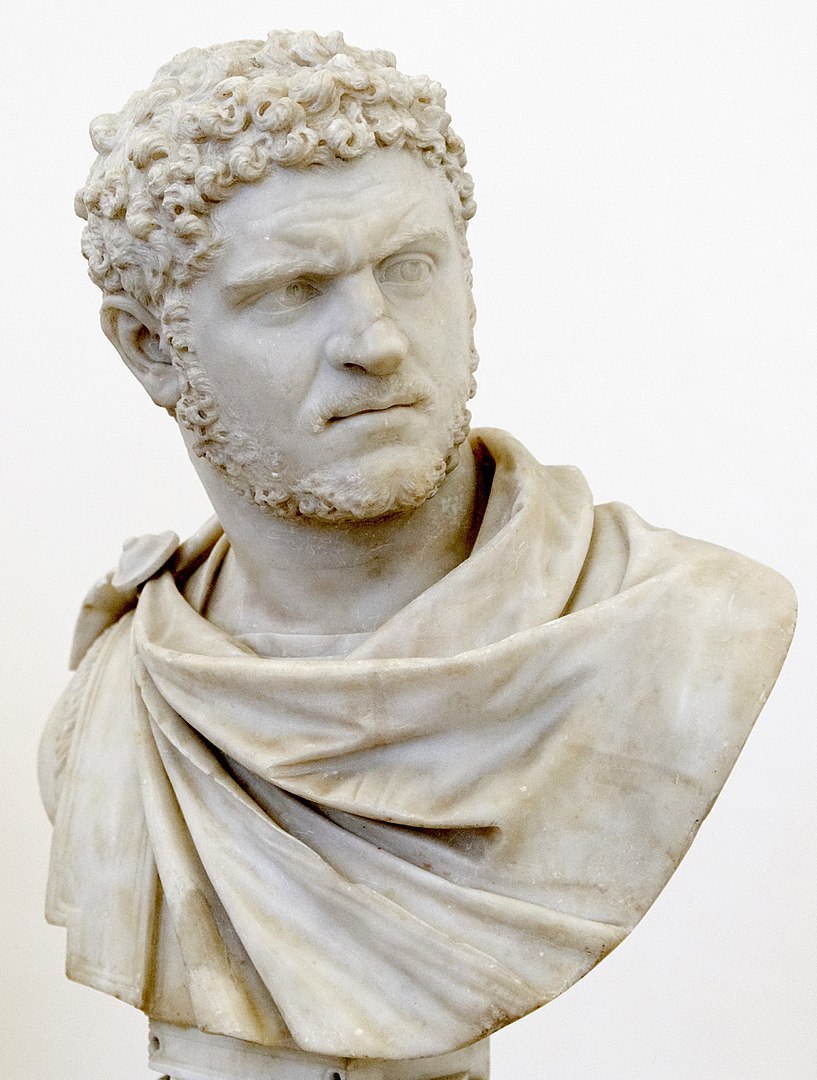Stamp: Emperor Joseph II (1780-90) by Adam Jakob (Austria 1908)
Emperor Joseph II (1780-90) by Adam Jakob (Austria 1908)
01 January (Austria ) within release Jubilee goes into circulation Stamp Emperor Joseph II (1780-90) by Adam Jakob face value 3 Austro-Hungarian heller
| Stamp Emperor Joseph II (1780-90) by Adam Jakob in catalogues | |
|---|---|
| Michel: | Mi:AT 141v |
| Stamp Number: | Sn:AT 112 |
| Yvert et Tellier: | Yt:AT 103 |
Stamp is vertical format.
Also in the issue Jubilee:
- Stamp - Emperor Charles VI (1711-40) face value 1;
- Stamp - Empress Maria Theresia (1740-80) by Martin von Meytens face value 2;
- Stamp - Emperor Joseph II (1780-90) by Adam Jakob face value 3;
- Stamp - Emporer Joseph II (1780-90) by Adam Jakob face value 3;
- Stamp - Emperor Franz Joseph (1848-1916) face value 5;
- Stamp - Emporer Franz Joseph (1848-1916) face value 5;
- Stamp - Emporer Leopold II (1790-92) face value 6;
- Stamp - Emperor Franz Joseph (1848-1916) face value 10;
- Stamp - Emporer Franz Joseph (1848-1916) face value 10;
- Stamp - Emporer Franz I (1792-1835) face value 12;
- Stamp - Emperor Ferdinand I (1835-48) face value 20;
- Stamp - Emporer Franz Joseph (1848-1916) face value 25;
- Stamp - Emporer Franz Joseph in 1848 face value 30;
- Stamp - Emporer Franz Joseph in 1878 face value 35;
- Stamp - Emperor Franz Joseph in marshal uniform face value 50;
- Stamp - Emperor Franz Joseph on horse face value 60;
- Stamp - Emperor Franz Joseph in coronation vestment face value 1;
- Stamp - Schönbrunn Palace face value 2;
- Stamp - Vienna Hofburg face value 5;
- Stamp - Emperor Franz Joseph (reign 1848-1916) face value 10;
- Stamp - Vienna Hofburg face value 5;
- Stamp - Schönbrunn Palace face value 2;
- Stamp - Emperor Franz Joseph on horse face value 60;
- Stamp - Emperor Franz Joseph in 1878 face value 35;
- Stamp - Emperor Franz Joseph in coronation vestment face value 2*1;
- Stamp - Emperor Franz Joseph in marshal uniform face value 50;
- Tete-Beche - Emperor Franz Joseph (1848-1916) face value 2*5;
- Stamp - Emperor Leopold II (1790-92) face value 6;
Stamp Emperor Joseph II (1780-90) by Adam Jakob it reflects the thematic directions:
A head of state (or chief of state) is the public persona that officially represents the national unity and legitimacy of a sovereign state. In some countries, the head of state is a ceremonial figurehead with limited or no executive power, while in others, the head of state is also the head of government. In countries with parliamentary governments, the head of state is typically a ceremonial figurehead that does not actually guide day-to-day government activities and may not be empowered to exercise any kind of secular political authority (e.g., Queen Elizabeth II as Head of the Commonwealth). In countries where the head of state is also the head of government, the president serves as both a public figurehead and the actual highest ranking political leader who oversees the executive branch (e.g., the President of the United States).
Painting is the practice of applying paint, pigment, color or other medium to a solid surface (support base). The medium is commonly applied to the base with a brush, but other implements, such as knives, sponges, and airbrushes, can be used. Painting is a mode of creative expression, and the forms are numerous. Drawing, gesture (as in gestural painting), composition, narration (as in narrative art), or abstraction (as in abstract art), among other aesthetic modes, may serve to manifest the expressive and conceptual intention of the practitioner. Paintings can be naturalistic and representational (as in a still life or landscape painting), photographic, abstract, narrative, symbolistic (as in Symbolist art), emotive (as in Expressionism), or political in nature (as in Artivism). A portion of the history of painting in both Eastern and Western art is dominated by spiritual motifs and ideas. Examples of this kind of painting range from artwork depicting mythological figures on pottery, to Biblical scenes rendered on the interior walls and ceiling of the Sistine Chapel, to scenes from the life of Buddha or other images of Eastern religious origin. In art, the term painting describes both the act and the result of the action. The support for paintings includes such surfaces as walls, paper, canvas, wood, glass, lacquer, clay, leaf, copper and concrete, and the painting may incorporate multiple other materials including sand, clay, paper, plaster, gold leaf, as well as objects. The term painting is also used outside of art as a common trade among craftsmen and builders.
The word emperor (from Latin: imperator, via Old French: empereor) can mean the male ruler of an empire. Empress, the female equivalent, may indicate an emperor's wife (empress consort), mother/grandmother (empress dowager/grand empress dowager), or a woman who rules in her own right and name (empress regnant or suo jure). Emperors are generally recognized to be of the highest monarchic honour and rank, surpassing king. In Europe, the title of Emperor has been used since the Middle Ages, considered in those times equal or almost equal in dignity to that of Pope due to the latter's position as visible head of the Church and spiritual leader of the Catholic part of Western Europe. The emperor of Japan is the only currently reigning monarch whose title is translated into English as "Emperor"



